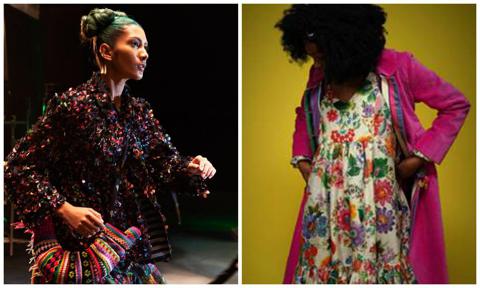
Aneeth Arora is a force to be reckoned with. Over the past decade, the designer has established her label Péro as a homegrown luxury brand with a conscience. She did this by backing concepts like ‘upcycling’ and ‘sustainability’ at a time when the conversation around the subject was virtually non-existent, especially in the luxury space.
The designer launched Péro Upcycle in 2015, a service in which the label’s artisans breathed new life into their clients’ clothing by applying embroidery and surface embellishments to them in a distinct Péro style. Naturally, she hit many bumps in the road with that one.
“When we started upcycling and recycling products, we understood that people would assume that it would be cheaper than the actual collection,” said Arora, when we caught up with her at the launch of her label’s latest collection, “But in reality, we discovered that upcycling is more expensive to use the waste and make it into something that would have value to people. What we ended up making were really high-end luxury products.”
Arora revealed that things started getting easier when her consumers started realising that they couldn’t differentiate between the upcycled product and the luxury ones. “That is when we started getting the confidence that when we put in the effort to add value to waste products, we can transform it into something valuable. It was a challenge to get people to understand this but when they saw the finished upcycled product they understood that this is a luxury product that could be an heirloom for them and can be passed down through generations and from there on the journey became easier.”
Péro’s growth as a label can be clearly witnessed in the latest winter/festive collection, titled Vibgyor, that is (as the name suggests) filled with bold colours, versatile silhouettes and surface embellishments.
“We’ve been doing winter collections so far, which are very monochrome. But this time, we set out with the thought that we will make it really colourful, and we will make it very vibrant,” said Arora, “We were doing our research, and we came across these Polish houses, which were covered with these beautiful, colourful floral patterns. And we read about it and we learned that they are still being hand painted. So we got very fascinated by it because we also hand paint every print of ours for every season. So we decided to use that as inspiration for developing prints for the season.” Aside from Polish art, Arora got inspired by Japanese Harajuku street style for silhouettes and layering techniques.
While being new and exploring different techniques this time, the collection carries signature Péro characteristics in the reversible garments, the contrast between bold colours and monochromatic checks, and distinctly Indian fabrics. “Since it’s our winter collection we have worked with very heavy wool fabrics, from fabrics woven in the Himalayas to pashminas from Kashmir. Apart from wool, we have used linens and cotton woven in West Bengal and the lightest fabrics used in this season are Chanderis from Madhya Pradesh and Jamdanis from West Bengal. There is a lot of use of hand crochet in this season, which we do in close association with our Afghani refugees.”
Arora has always maintained that Péro is a collaborative project. She reiterates the fact when asked about how she feels she has evolved as a designer over the past decade, “Every season we work with new techniques and new people. It starts reflecting in the layers that people see in our clothes, whether it’s a layer added through technique or skill. We’ve been collaborating with a lot of craftsmen and their expertise has also started reflecting in our work. Our work is a collaborative project and now the people we work with have understood our language. This didn’t happen earlier. There was a time when people were unaware of what Pero is and this is why our clothes and fabric used to be simpler. Now we have evolved together and added many layers. One can see the complexity in the garment from where it began and where it is now.”
We couldn’t really let her go without making her spill some of her best-kept upcycling secrets but, as it turns out, she doesn’t believe we need any help on that account.
“Indians have been doing this on their own in their homes without realising it for ages,” said Arora, “We do it in the easiest ways, like patching up torn clothes, or when we travel somewhere and we find a souvenir badge that we pin on our jacket, we unconsciously upcycle our clothes and add more value to them this way.”
There you have it! Take inspiration from Arora and breathe new life into your old clothes by upcycling them this season.






